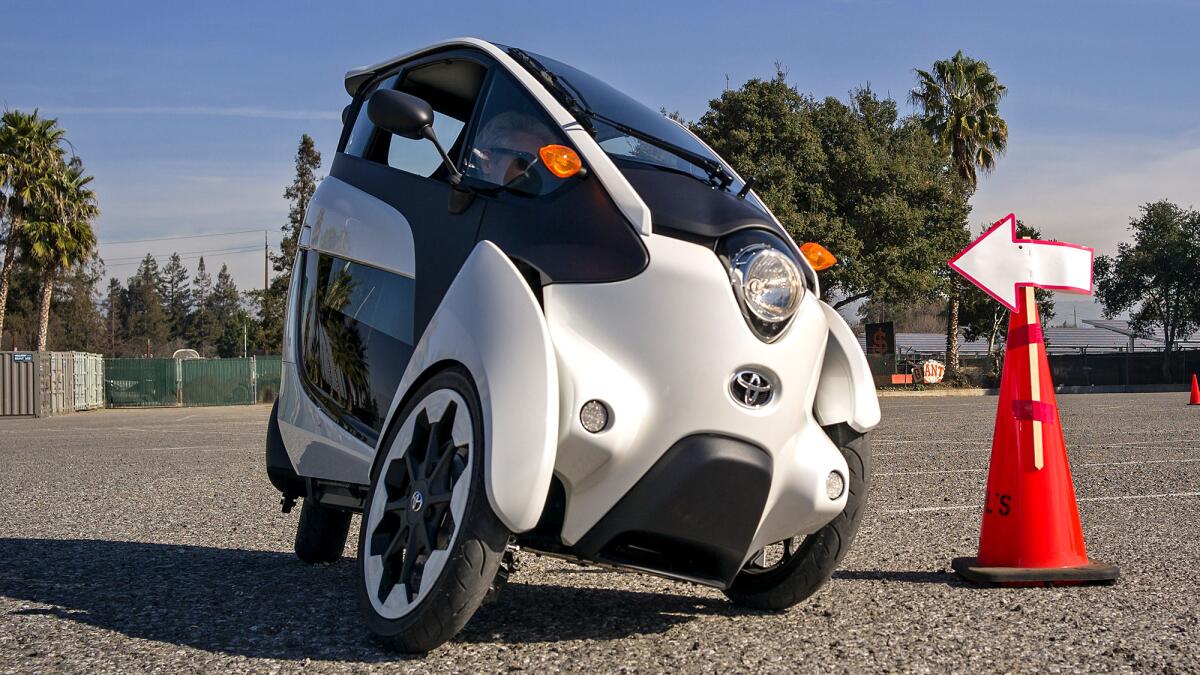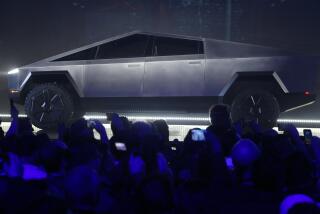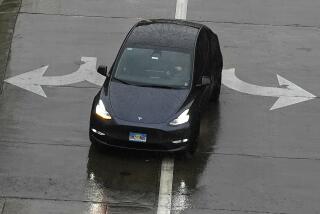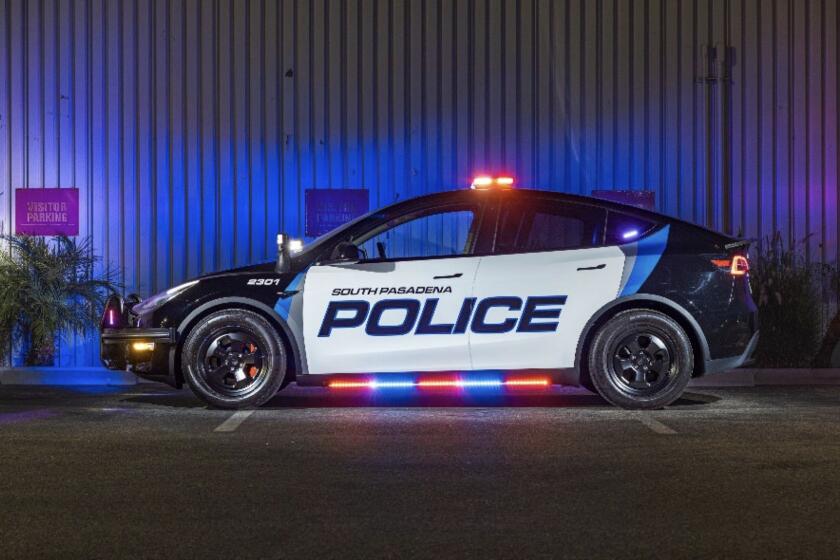Cool electrics on display as Toyota tests iRoad scooter

Toyota sent engineers and hardware from Tokyo to California to begin some U.S. road testing of its electric iRoad three-wheeled and COMS four-wheeled mini-cars.
Over three days in the parking lot of San Jose Municipal Stadium, company executives watched as 60 potential consumers drove the iRoad and COMS on a slalom course marked by orange traffic cones.
The result?
“Fun,” said Toyota business development manager Jason Schulz. “Every single person, their first reaction is, ‘This is fun!’ You can actually watch people start to grin.”
The iRoad is the faster and lighter of the two vehicles. At about 600 pounds, powered by a lithium cell battery, it accelerates quickly and maneuvers with easy agility.
------------
FOR THE RECORD
Feb. 6, 11:40 a.m.: An earlier version of this story listed the iRoad weight as 200 pounds. It is about 600 pounds.
------------
Schulz describes the iRoad as “a new concept in urban, personal mobility that combines the practicality of cars with the fun of motorcycles.”
It does feel a little like a motorcycle. In the turns, it actually tips in to make the corner -- which can be disconcerting to some operators, Toyota executives said.
Artem Violety, a Toyota consumer insights manager, said some people compare the experience to being in a small boat, or on roller blades or skis.
“It’s very elegant,” Violety said. “It’s like you’re a fish, swimming in a pond.”
That’s because the steering is done through the rear wheel. This causes the iRoad, at slow speeds, to fishtail like a boat being guided by a rudder.
At higher speeds, two gyro motors actually lean the iRoad as it enters a turn, giving the vehicle a more motorcycle-like feeling.
So-called “haptic feedback” from the front wheels will tell the driver when the vehicle is either going too fast or turning too sharply. And the machine will actually apply its own brakes if a critical angle is being exceeded.
Makoto Morita, head designer of the iRoad, said not even a very sloppy or aggressive driver could flip an iRoad over.
“Dekimasen!” Morita said. Translation: “You can’t!”
You can, though, enjoy the pleasurable sensations of leaning quite far over with confidence, and of an extremely tight turning radius.
The COMS has a top speed of about 35 mph. It runs on a lead battery that, using 110 volts, takes about six hours to recharge. The vehicle weighs about 900 pounds.
The iRoad has a top speed of about 40 mph, with a range of about 40 miles, and takes about three hours to recharge.
Both vehicles are stripped down and utilitarian, with minimal dials and gauges, and controls limited to acclerator, brake, parking brake, turn signals and windshield wipers. Each has one forward and one reverse gear, selected by push buttons.
The COMS, which looks like a jazzy golf cart, has no doors. The iRoad, which looks like an airplane fuselage with two wheels in front and one in back, has lightweight automobile-style doors that swing out, and windows that drop down to open and lift up to close. The only safety equipment in either vehicle is the seat belt.
Both have plenty of headroom, but drivers over six feet tall, with long legs, may feel somewhat pinched.
Both the iRoad and COMS are single-seat vehicles, though the iRoad has a small compartment behind the driver’s seat that could, conceivably, accommodate a very small passenger. (In Japan, passengers are not allowed. In France, where some testing is underway, a passenger would be allowed, Schulz said.)
The COMS is already for sale in Japan, where individuals and businesses pay the equivalent of $7,000 to $8,000 for one of three models.
Schulz said users include companies like 7-Eleven, which are using it for deliveries, and “housewives who use it to run errands and meet friends for lunch.”
Because the iRoad is still in the prototype phase -- this is the fourth version, after more than five years in active development, and almost a decade in planning, Morita said -- Toyota won’t release stats on battery or engine size, and no price point has been identified.
It’s also not clear what U.S. regulators will call it -- a minicar, an electric personal vehicle, or a three-wheeled motorcycle. In Japan, Morita said, the vehicle is literally called “bicycle with drive force,” a category that includes scooters with engines under 50cc as well as certain other three- and four-wheeled vehicles.
Schulz said conversations with Department of Motor Vehicles administrators in Sacramento are already underway.
But Toyota says the vehicle will be priced competitively when it’s ready to take to market.
The company is optimistic about a place for COMS and iRoad in the near future.
“As markets continue to become more and more urban, we believe there is potential for a new, small EV that could help with short commutes or last-mile transit needs,” Schulz said.
Twitter: @misterfleming







